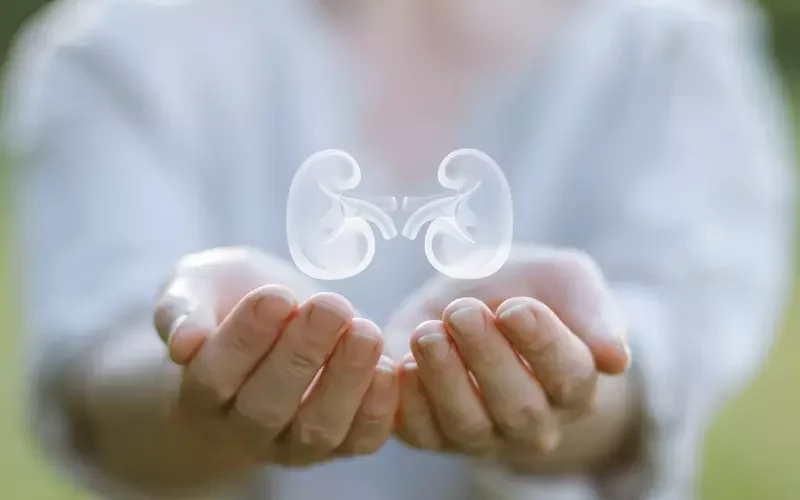Acute Renal Failure (ARF), a critical condition that affects the kidneys’ ability to filter waste products from the blood, is a significant concern in the medical field. The optimal management of Renal Replacement Therapy (RRT) in ARF remains uncertain, leading to various studies and trials to determine the best approach. One such study is the VA/NIH Acute Renal Failure Trail Network Study (ATN Study).
The ATN Study tests the hypothesis that a strategy of intensive RRT will decrease 60-day all-cause mortality in critically ill patients with ARF. The study aims to increase the frequency of intermittent hemodialysis (IHD) and sustained low efficiency dialysis (SLED) treatments from three times per week to six times per week. Additionally, it seeks to increase continuous venovenous hemodiafiltration (CVVHDF) effluent volume from 20 mL/kg/hr to 35 mL/kg/hr.
In both treatment arms, subjects convert between IHD and CVVHDF or SLED as hemodynamic status changes over time. This strategy attempts to replicate the conversion between modalities of RRT that occurs in clinical practice. However, implementing this strategy required the development of flexible criteria to balance the need for uniformity of treatment between groups and practitioner discretion regarding the modality of RRT to maintain patient safety.
To address safety and ethical issues similar to those raised by the Office of Human Research Protections in its review of the ARDS Network studies, a survey of practitioner practices was performed. Observational data on the management of RRT in comparable critically ill patients with ARF managed outside of the research context is being collected prospectively. These data will help inform the study’s DSMB and site IRB’s of the relationship between the study’s treatment arms and concurrent clinical practice.
Interestingly, a study titled “Comparison of Urine Output among Patients Treated with More Intensive Versus Less Intensive RRT: Results from the Acute Renal Failure Trial Network Study” found that more intensive RRT was associated with a greater reduction in urine output during the first 7 days of therapy and a greater risk of developing a decline in urine output of ≥50% in critically ill patients with severe AKI.
Another study titled “Outcomes of sustained low efficiency dialysis versus continuous renal replacement therapy in critically ill adults with acute kidney injury: a cohort study” found similar clinical outcomes for patients treated with SLED and CRRT.
These findings highlight the complexity of managing ARF and the need for further research to optimize RRT strategies.
Psychosomatic Impact of Acute Renal Failure
ARF can have significant psychosomatic aspects. While specific research on the psychosomatic aspects of ARF is limited, studies on chronic kidney disease and end-stage renal disease provide some insights that may be applicable to ARF as well.
Patients with kidney diseases often experience psychological distress, including depression and anxiety. The most common psychiatric complication occurring as a result of renal failure is depression in the patient and anxiety in the associated partner.
Furthermore, the treatment for kidney diseases, including dialysis, can lead to significant lifestyle changes and impose a heavy psychological burden on patients. Patients may feel like a burden to others and may experience a depressed mood most of the day.
Stress can also have a detrimental effect on kidney health. Chronic stress can lead to harmful health outcomes, including negative impacts on the kidneys.
According to the German New Medicine, acute renal failure is related to the biological conflict of “not being able to mark the territory” or “feeling like a fish out of water”. This is seen as a response to a situation where the individual feels unable to assert themselves or establish their space.
During the conflict-active phase, the renal pelvis and renal medulla cells proliferate causing a tumor-like growth. The biological purpose of the additional cells is to increase the production of urine, which is a way to mark territory in the animal kingdom. If the conflict is intense, the increased cell proliferation can lead to renal cell carcinoma or a Wilms’ tumor.
In the healing phase, following conflict resolution (CL), the additional cells that are no longer needed are removed with the help of fungi or mycobacteria if available. The healing symptoms are pain and inflammation, and if the healing phase is intense, it can lead to acute renal failure.
It’s important to note that each patient’s experience with ARF can vary, and the psychosomatic aspects can depend on numerous factors, including the individual’s overall health, support system, and coping mechanisms. Therefore, a holistic approach to treatment that includes attention to mental health is crucial for these patients.
Disclaimer
The information provided in this article is for general informational purposes only. The content presented on this website should be considered solely as opinions and personal experiences. Read more
